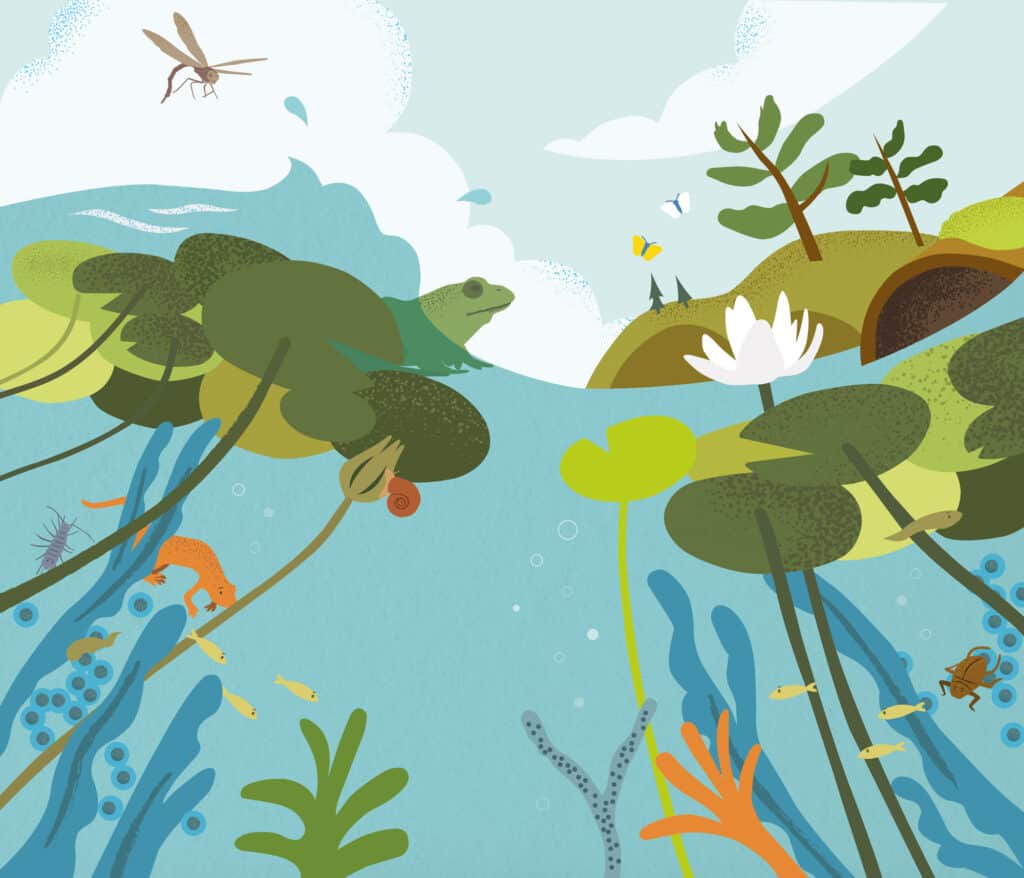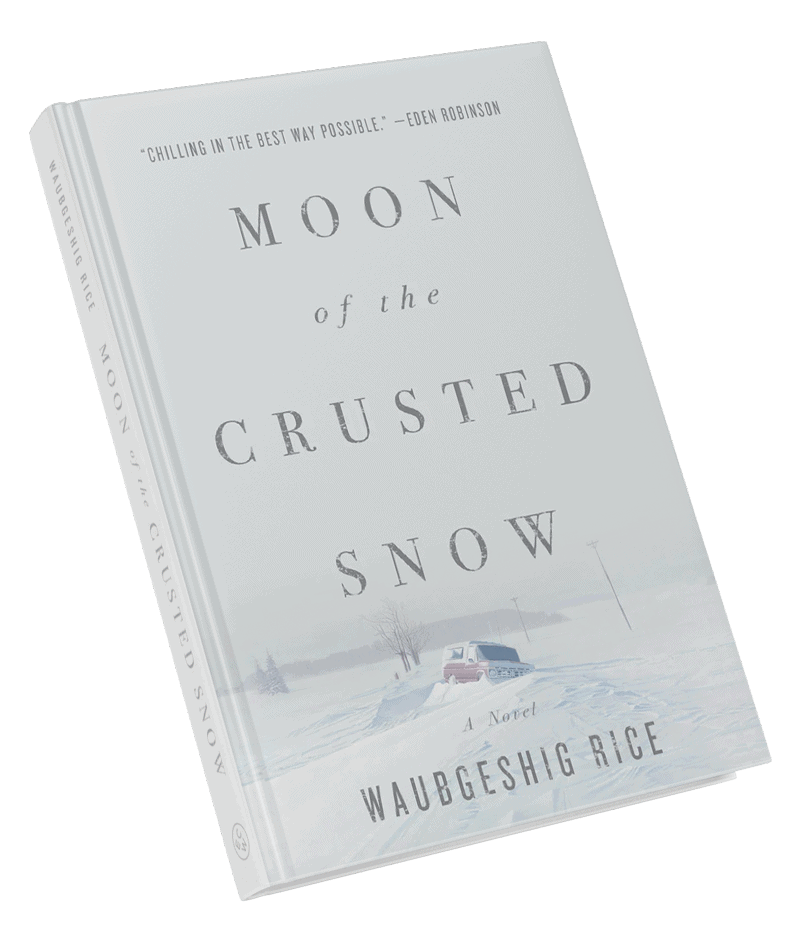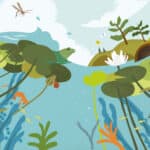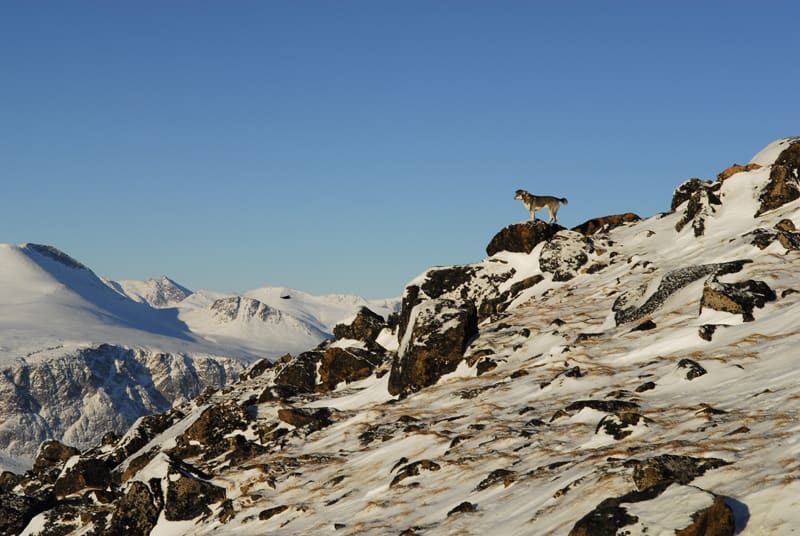By Andrew McConnell
As an Indigenous educator—a technology teacher in Ontario—I have watched how literacy affects which concepts students are able to comprehend and discuss. Words hold power. They can excite and educate, but they can also demote, demoralize, and defame. The very word science can be used to validate knowledge, while withholding it can prescribe information and ideas as “mere” folk knowledge—or, worse, defame them as myths and legends. Indigenous STEM knowledge is often a target of this exclusion and devaluation, and the reason has more to do with language than you might think.
At first blush, it might seem outside the realm of STEM, but language is at the heart of thought, and so the rules of language lay out the rules for thought. Language and literacy (a form of access to language) set up the limitations—or lack thereof—of what we can think or even describe when we try to comprehend a phenomenon or a problem. Try it for yourself at this moment. Think about something, anything. I’ll wait. Was that thought wrapped only in vision, sound, smell, sensations of touch, or did you have an internal dialogue?
Language orders the world for us. Our education system maintains that order, placing a cultural lens on how we see ourselves in tandem with the rest of creation. The English language, my first language, has distinct categories for societies beyond the obvious connotations of “First World” and “Third World.” The word tribe has been used to separate colonial nations from Indigenous ones wherever the former have ventured. Subsequently, this simple use of one word has methodically kept Indigenous ways of thinking trapped in the past and stripped of value in the present. Ironically, it is Indigenous perspectives that may hold solutions that can address the problems the modern world has created, especially those regarding preservation and stewardship of the land for future generations.
For Indigenous people, our tribe is simultaneously our nation, our family, our community, our past, present, and future. Our languages contain our ways of thinking and, by extension, our ways of being, and they are very different from the languages (and, therefore, ways of thinking and being) used in Eurocentric science. This is one of the precious gifts we offer the world. Eurocentric science has been responsible for both amazing peaks in innovation, and disastrous lows, while at the same time shunning what Indigenous science knows intrinsically. Indigenous Peoples are dependent on the rest of the world for the acknowledgement of our existence.
As an Anishinaabe person, I see how our concepts of ways of living in relation to others are key missing elements in current STEM education. Some would refer to this as ethics; in reality, these concepts are much deeper. The current crises Indigenous Peoples are dealing with are not ethical; they are existential. STEM is currently focused on the innovative things we can do, which includes teaching students concepts that have been developed in labs and classrooms, building upon what is currently in use. With an emphasis on progress, rarely is there an opportunity for students (or educators) to question whether we should pursue STEM work and methods that are harmful to the world and to ourselves. Furthermore, students aren’t even given a framework—or the linguistic tools—to begin to evaluate what is good and bad beyond immediate and personal goals.
Anishinaabemowin—the language of Anishinaabe people—does, however, carry key concepts for evaluating our effects on the world and inherently questioning whether we should do something. The word nindinawemaganidog translates as “all my relations”—but the meaning runs deeper than one’s family. It is about our connection to all other living things and our relationship with them.
We see multiple communities living in the same space. We recognize plant communities, bird communities, insect communities, animal communities, and we acknowledge our reliance on them for life itself. We have known, for instance, about our reliance on insects since long before Western science became alarmed at the decrease in bee populations. We have no traditional insecticides, no word for a chemical that would kill insects and affect the population of our relatives, the eagles. We live in a deep relationship with the world and care for it rather than seek to control it. We know that we live because all other things live. This is of course a perceptual model for viewing the world—our literacy sets it up for us.

Western science, with its language of objective position, almost god-like, is a different perceptual model. It has its own stories of study, dissection, theorizing, and a belief that one can take up an objective position outside an event—observe it, and remain apart from it.This is a key part of experimentation and academic study. It is the literacy of school science and is held tightly by curricula and classroom practice. However, for people who fundamentally recognize that we are inextricably linked to the world, and that experimentation has an effect on other living things, the model of objectivity seems forced. For instance, the animals we dissect came from somewhere and the chemicals we use to preserve specimens will have an effect on the lands they go to once we are done with them.
A friend of mine teaches in a northern Anishinaabe community, one that still has access to traditional land and practices. For their science class about dissection and anatomy, a local trapper will bring in an animal that has recently been caught. He will dissect the animal for the students in class and carefully explain to them what all the organs are, and how each part is used by the animal before its death and how he will use them afterwards. The students can see everything and ask questions in the moment, and learn why they trap—to live—and why they wouldn’t—to preserve the animal community.
This practice of minimizing the impact on the environment lives in the concept of minobimaadziwin, another great example of how language creates a base of understanding for our science. The word translates to “good living” or “living a good life.” Again, the meaning is much deeper. It isn’t based on what you have or how easy your life is. It’s about how you live in relation to others, meaning all of our relations; the plants, animals, birds, fish, all other living things. The school’s practice of working with the trapper is an example of this. The animal has been killed so that someone else can live. It makes sense to work with that same animal to teach students about the science of life—biology—rather than kill another animal. The way this community has chosen to conduct science lessons comes out of their culture, where nothing is disposable or extraneous. This behaviour is a physical manifestation of the words nindinawemaganidog and minobimaadziwin.
What Anishinaabe call minobimaadziwin, environmentalists (now) call “sustainability.” While sustainability has only recently entered our curriculum, and made it into everyday conversation, it has existed in our language as a fundamental concept of how to be a human being. Anishinaabe people know that we live because everything else does—not the other way around. The scientific concept is so fundamental to being Anishinaabe that we teach it to our children from the very beginning. These ideas are in our literary traditions, the stories we tell our children, not because they are simple ideas but because they are so important for the future. These concepts of conscious reliance on the rest of the world set up how we grow into responsible adults ready to work in relationship with our communities and those with whom we come into contact.
Indigenous ways of being and thinking are not viewed by popular culture as valuable for the future. Science fiction, which can be seen as the literature of STEM, is the literacy of what could be; the possibilities of the future. And it never includes Indigenous people, our languages, or ways of being. This has been the historical practice of non-Indigenous politicians and writers for a long time. Think of the more recent, popular, dystopian, sci-fi stories of a world worn out and people leaving this world behind to go to find a new one to colonize. Interstellar is just one example. Whose story is this?
The language of exploration and colonization is so ingrained in Western culture that it is projected forward into the future through fantasy. Colleagues of mine were building an assignment around STEM, hoping to engage students in a project that would make concepts approachable and real. The project asked students to be space explorers on a mission to colonize a new planet. Nobody saw the irony or immediately understood why Indigenous teachers raised eyebrows at the concept of leaving this world behind, abandoning it after using it up, and moving on to do the same with a new world.

Recent science fiction by Indigenous authors replays different stories from our past. Cherie Dimaline’s characters in The Marrow Thieves survive pursuit by those who would steal their dreams, and in Moon of the Crusted Snow, by Waubgeshig Rice, an Indigenous community comes together to survive while the rest of the world appears to have stopped. There is a key scene in this book where an Elder and a young man discuss the idea of apocalypse. It comes out that we have already survived our apocalypse and come out the other side with the support of our families, our languages, and our technology. This is our science fiction, which continues our literary legacy, maintaining our fundamental STEM concepts of learning from the land, using what is available, and being wary of the damage that we might cause today and tomorrow.
This is one reason why replacing the standard Grade 11 English credit with the Understanding Contemporary First Nations, Métis, and Inuit Voices course is a good idea. It brings in concepts that are prevalent in many Indigenous cultures and supports students to think differently and critically about how and why we do things. Every class a student takes is related, and every class will influence the others. STEM courses teach how things work, while language courses reveal what is possible.
Rice’s own experiences as a writer could have been very different if the Ontario curriculum had shown Indigenous representation in literature. “When I attended high school in Ontario in the 1990s,” says Rice, “Indigenous authors and their books were completely absent from the curriculum. I wouldn’t have known that Indigenous writers even existed if it weren’t for my family members who were already aware of them and shared their work with me. The education system back then failed me and all of my peers by not teaching us about the brilliant Indigenous storytellers who were blazing a trail in literature.”
But even changing courses on literature won’t be enough as past mindsets live on in educators. Just this year, a colleague insisted that Indigenous knowledge is superstition compared to the knowledge of Western science, even after attending professional learning about the new Indigenous literature course. He dismissed our knowledge—which has survived millennia—as folksy ideas, not useful in the present, let alone the future, despite it having helped us to survive and adapt in the face of incredible change and outside pressure. He was ignorant of how much Indigenous cultures have contributed to the collective scientific knowledge of the world, from the development of crops like corn, potatoes, tomatoes, and medicinal plants, to health tools, like syringes and petroleum jelly.
The primary question of STEM has been, How can we do this? It should also include the question, Should we do this? The things we do are very often the issues behind the crises. minobimaadziwin, in this case, asks us to take a moment to look around and note that our situation is the result of how we use our science, technology, engineering, and math.
Anishinaabe science and technology has a history of working with the environment and seeking balance. There is no desire to conquer the world. The concept of nindinawemaganidog makes us aware of our dependence on the land and its inhabitants. Minobimaadziwin explains why our communities fight against the building of pipelines under rivers and lakes.
Language and literacy are therefore part of the cure for what currently ails us, because both allow us to describe what we might dream, desire, and value. Our languages are our collective literacy, and they allow us to dream of things and share them with each other. Not only do we share the language, but we share the meaning behind it. This is why literacy is important in STEM.
For example, when the idea of sustainability is already ingrained in the language of a culture, the people of that culture are ahead in protecting their environment and themselves from harm. In cultures where the right words don’t exist, time is spent developing the language to explain what is happening and then time is spent arguing on whether it is actually happening. This is the situation for STEM fields right now in non-Indigenous nations that have wrestled with and historically opposed the ideas of sustainability and collaboration to solve the collective issues we face.
Language is the only means for describing and planning for the future. If there is to be a future for humans at all, it needs to include Indigenous literacies and ways of thinking. This is why systems of education need to remove their restrictions on including Indigenous authors, thinkers, and cultures.
We saw a glimmer of it in Ontario this past summer. The new science curriculum contained references to both STEM and the importance of Indigenous ways of thinking. But time passed, and Indigenous ideas were removed from the final release while STEM thinking remained. For all of the discussion about being innovative and preparing students for the challenges ahead, the curriculum—the literature of education—is being held back.
It’s the curriculum that is not changing, and the curriculum is the language that sets up what teachers can teach and evaluate in the classroom.
For a writer like Rice, it’s clear that Indigenous voices not only add important representation but can also effectively strengthen science and literacy learning for all students. “I’m thrilled to know that students today [can] have more access to Indigenous books built right into the provincial curriculum. The truths shared in these works can empower Indigenous students and enlighten non-Indigenous ones. The future is much brighter as a result.”
The current system of education in Ontario is the same as it was in the past, so it delivers the same results. Its promise of success is not universally delivered. Government reports, like the Royal Commission on Aboriginal Peoples, have made it clear why Indigenous people have remained marginalized. I ask again, should we continue to do this, or is it time for Western education to adapt? If we want a different result, we need to start by thinking differently. Thinking differently requires us to change the language that we use. The first step on this journey is to let others in.



